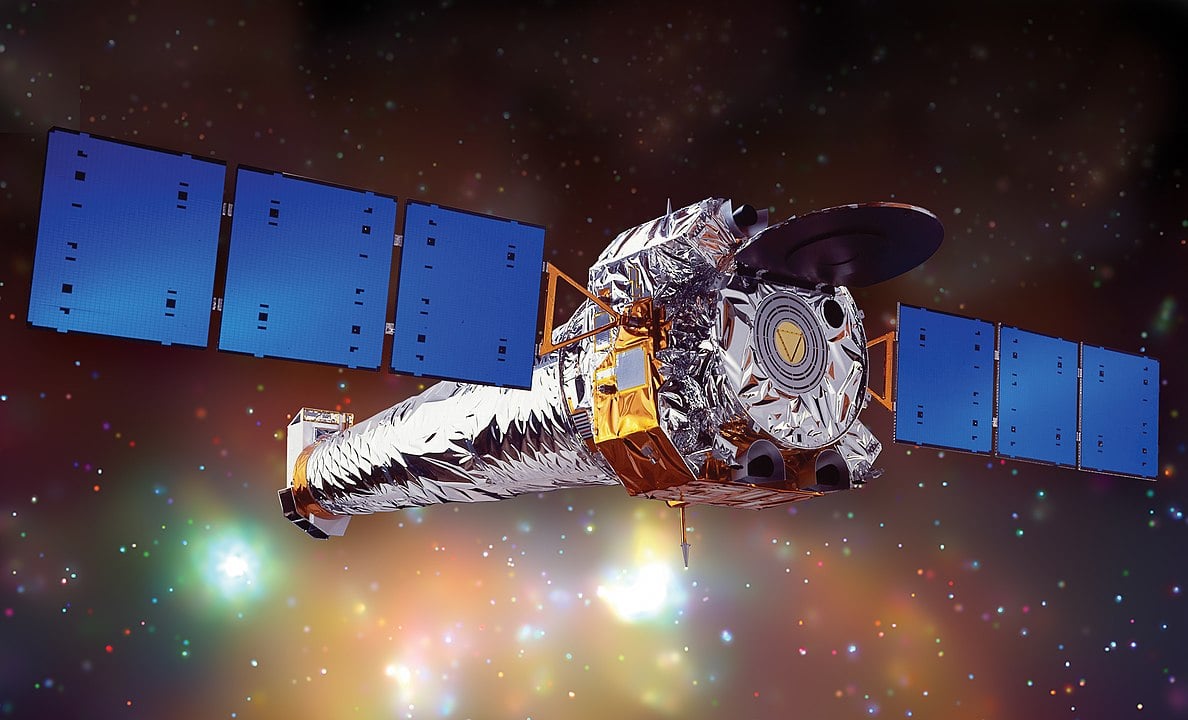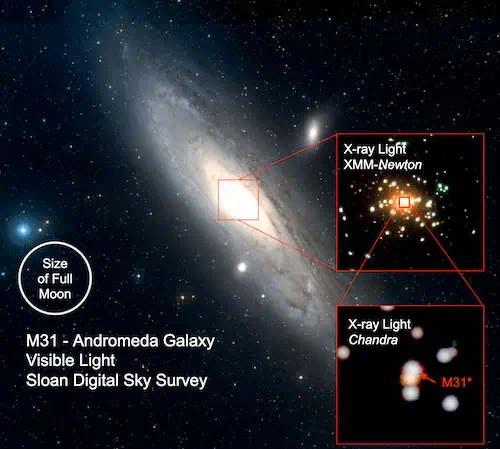The Andromeda Galaxy, also known as M31, is the nearest spiral galaxy to the Milky Way and the largest galaxy in our local group. It's located 2.5 million light-years from Earth and is visible to the naked eye from the northern hemisphere on clear, dark nights. Similar in structure to the Milky Way, Andromeda contains hundreds of billions of stars, as well as a supermassive black hole at its core. Studies have revealed that Andromeda and the Milky Way are on a slow motion collision course, due to merge in about 4.5 billion years time, forming a new, larger galaxy.
 Andromeda Galaxy (Credit : Luc Viatour)
Andromeda Galaxy (Credit : Luc Viatour)
The supermassive black hole known as M31*, with a mass estimated to be around 100 million times that of the Sun—making it significantly larger than the black hole at the center of our own Galaxy. Despite its immense size, M31* seems relatively quiet, showing only occasional signs of activity. It's surrounded by a dense cluster of stars making it a complex environment for study. As one of the closest supermassive black holes to Earth, M31* provides a fabulous opportunity to study the nature of galactic cores and the forces that shape them.
"Every large galaxy has a supermassive black hole, but the exact nature of the relationship between the two is still mysterious. After analyzing data, I had a chill, because I realised I was looking at the X-rays from a supermassive black hole flicker on and off." - Stephen DiKerby from Michigan State University
One such study into M31* was undertaken by Stephen DiKerby, a member of the IceCube Neutrino Observatory and a physics and astronomy research associate in College of Natural Science at Michigan State University. His team analysed 15 years of data from the Chandra X-ray Observatory to study X-ray emissions from M31*. Their research, recently published in The Astrophysical Journal, explores the connection between galaxies and their central black holes, a key to understanding the evolution of the Universe.
 Artist illustration of the Chandra X-ray Observatory
Artist illustration of the Chandra X-ray Observatory
The study began with the detection of neutrinos that led back to M31* along with the X-ray radiation also pointing back to the supermassive black hole. They discovered that M31* has been in an elevated state of activity since a major X-ray flare in 2006, followed by another in 2013. This pattern aligns with IceCube findings that linked neutrino emissions to similar X-ray flares in other galaxies, suggesting that such events may mark key windows for neutrino production during the life of a supermassive black hole. To pinpoint M31*'s exact location, the team used the high-resolution data from Chandra to distinguish between four nearby X-ray sources—S1, SSS, N1, and P2—ultimately identifying P2 as the black hole's position.
This research was made possible by Chandra's exceptional capabilities, but the telescope faces potential loss of funding despite still functioning well. A proposed successor, the AXIS telescope, is not expected to be operational until the 2030s. DiKerby emphasised the importance of maintaining Chandra to continue high-resolution observations and to bridge the gap until new technology is available. He hopes the study will inspire ongoing analysis of M31* and is keen others continue to monitor its activity to better understand the behaviour of supermassive black holes.
Source :When a black hole winks at you
 Universe Today
Universe Today
